Extra virgin olive oil does not age well. It has the same enemies as a fine wine – heat, light and air – but most of us leave it next to the stove. This is one sin I have renounced since talking to Fil Bucchino, a professional olive oil taster and founder of Abandoned Grove, the Toronto company he started in 2016 to rescue overgrown trees in Italy and make premium extra virgin olive oil (EVOO). American food writer Michael Pollan and Canadian celebrity chef David Rocco are fans.
Bucchino is on a mission to counteract industrial farming in Italy, which has squeezed out small farmers who can’t compete with the vast quantities and lower prices of EVOO produced on huge swathes of land. “I’ve been saying for years that [EVOO] should belong to the fresh produce section of the grocery store, not next to ketchup and mayo. And because it’s next to ketchup and mayo, it’s seen as a staple and a commodity, and the ripple effects on communities is insane because we tend to abandon groves that don’t produce fast enough, or they’re not producing enough.”
For $189, you can buy an annual One Bottle One Tree membership from Abandoned Grove, which comes with an adoption certificate for a tree in one of five Tuscan groves, one of two 500-ml bottles of EVOO made from that grove, event invites and a coffee table booklet on the mission and its impact.
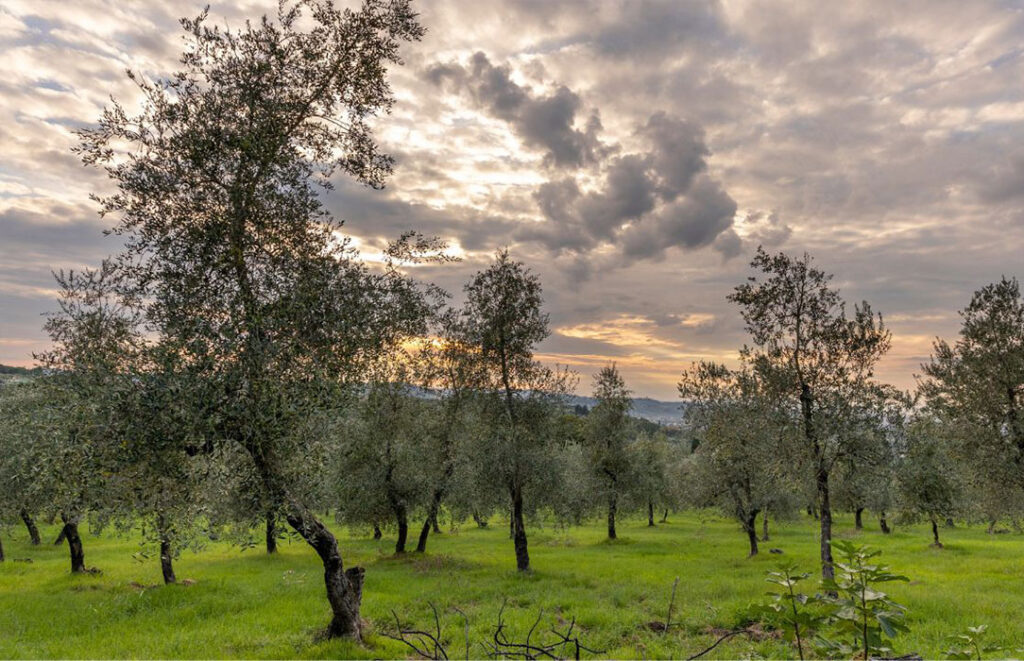
Olive groves in Bagno A Ripoli, Florence, Italy. Photo: Courtesy of Abandoned Grove
An olive tree in Tuscany only produces two 500ml bottles a year, so you can gift forward the second bottle or donate it to the Italian farmer to sell, and it also partners with social projects to employ disadvantaged workers.
Since 2009, Bucchino has rescued 5,052 trees on 25 hectares of Tuscan land loaned by, or rented from, local owners.
Bucchino, who was born in Florence and grew up in Caracas, Venezuela, emigrated to Toronto at 16 with his sister and parents. After getting a degree in biomedical sciences at the University of Guelph, he abandoned his goal of going to medical school when his punk rock band, Flashlight Brown, was offered a record deal and they went on tour.
He arrives at Zoomer with a bottle of Founder’s Reserve EVOO, which is offered first to long-time friends, family and supporters and then to the public. It costs $390 for a case of six 500-ml bottles, and the 2024 harvest sold out within two weeks.
In a free-ranging conversation, the 50-year-old talks about his passion for olive oil, gives tips on how to tell a good EVOO from a bad one and serves a life-altering combination of honey gelato drizzled with Founder’s Reserve.
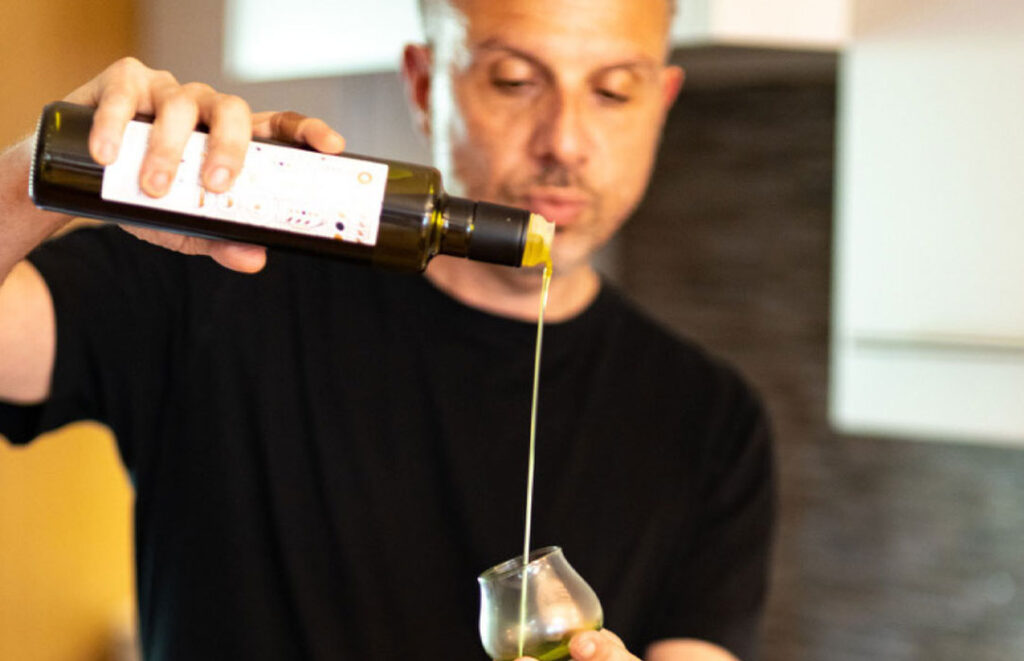
Fil pours his olive oil at a professional tasting. Photo: Courtesy of Kate Dockeray
Kim Honey: Tell me about the first olive oil that changed your life.
Fil Bucchino: My aha moment was on a break from tour in the early 2000s in Castelnuovo Berardenga, between Siena and Florence. I was in a restaurant. It was the new harvest season, so the owner had some that he was very proud to show off. At the time, I didn’t know any way of analyzing it, so I tasted it with the bread. I ended up licking the plate, because there was something about it that was wild. The one-two punch for me was it coincided with me attending my very first olive harvest. The way the leaves and olives felt in my hand, everything about it just felt magical. I went down this deep, deep, deep rabbit hole and I haven’t gotten out of it.
KH: How do you make your money?
FB: I work in olive oil as an international judge. I do talks, I do a lot of travel consulting, but my main job is this grove rejuvenation business that I am very excited about, because it links all of the good things that I love about olive oil.
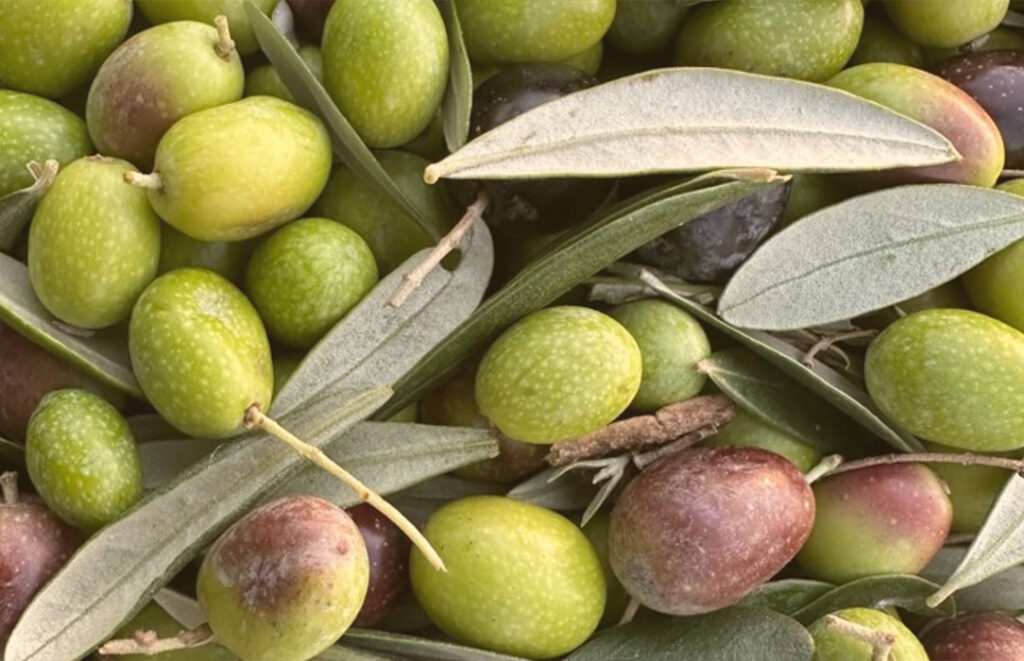
Olive varieties Frantoio, Leccino and Moraiolo. Photo: Courtesy of Abandoned Grove
KH: So, being an assaggiatore olio di oliva is a job?
FB: That’s a professional olive oil taster. There are a lot of courses that you’ll do for two or three days and then they’ll give you a sommelier certification, but, in reality, I’ve been tasting for over 10 years and I think now I’m just getting to it. As an assaggiatore, I can participate in official panels in Italy. I’m a member of the Italian National Directory of Virgin and Extra Virgin Olive Oil Experts, and to enter that, there’s a lot of studying and tasting you have to do. It’s a lot of years of dedication.
KH: Do you have to do an exam and taste it blind?
FB: There’s wine, where you taste blind. With olive oil, it’s more spotting the defects and the type of defect and the intensity of the defect.The thing with olive oil, in comparison to wine, is that olive oil is alive and it changes. It’s fresh fruit juice, which means that any day that you taste it will taste a little bit different. So it’s very important to know how to taste it. Wine is made and corrected in a cellar. Olive oil, you get one shot at it.

Founders reserve oil extraction. Photo: Courtesy of Abandoned Grove
KH: When you open a bottle of Abandoned Grove olive oil, how soon should you use it?
FB: Usually, you’ve got four to six weeks until you notice a little bit of a difference. What I love about it is, depending on how it has changed, you can use it for different culinary applications.
KH: Which brings us to the EVOO. Most people who know anything about food will have a regular one for cooking and a good one for drizzling.
FB: Although I would argue the difference and the level of defects between the one for cooking and the one for drizzling is probably not that different.
KH: That’s good to know.
FB: There are a lot of marketing words that are, in my opinion, promoting things that are not really true and create more confusion. That confusion then has ripple effects on the communities.Two thirds of [the groves in] Tuscany are abandoned, because it doesn’t produce fast enough. There are almost 450 million trees abandoned or at risk of abandonment in Italy, and we’re looking at almost five billion in the Mediterranean. These are being replaced by industrial olive oil, and we need to start being mindful of where it comes from, because we literally are destroying ecosystems. There are 2,000 varietals in the world, and the industry wants to push you towards three or four.

Olive harvest in the rain, Bagno A Ripolo, Florence, Italy. Photo: Courtesy of Abandoned Grove
KH: What does an abandoned grove look like?
FB: The trees are completely overgrown, and they start to connect with other trees. The last grove we rejuvenated, when we first took it over we didn’t know what kind of olive trees we had. We didn’t know how many, because it was literally impenetrable.
KH: So for people who can’t buy your olive oil, what’s good to buy?
FB: The label will allow you to disregard a bunch of stuff that’s on the shelf. After that, we need to taste it.
KH: I’m at the grocery store. Should I buy the three-litre tins?
FB: It depends on how fast you use it. Tins transfer heat a lot faster than bottles. Olive oil hates light, it hates heat and it hates oxygen. If I have empty space in the tin, that oxygen will speed up the oxidation of the oil.
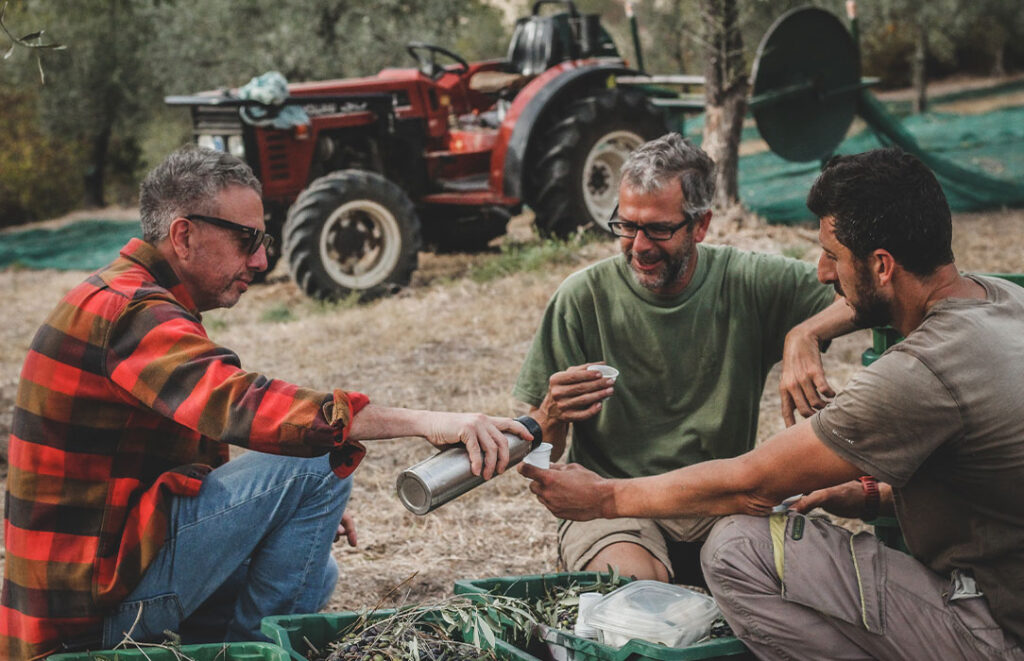
After lunch coffee break during the harvest. Photo: Courtesy of Abandoned Grove
KH: So, do not leave EVOO by the stove?
FB: We all do. It’s there because we use it a lot, but we should never leave it there.
KH: Would it be optimal to buy it one litre at a time, because then every bottle you open is going to be fresh?
FB: The optimal would be to buy a sizing that works with your level of consumption. If you don’t use a lot of it, then I would say use a 250 ml or a smaller bottle.
KH: What about plastic two-litre jugs?
FB: Plastic you want to avoid one hundred per cent, because olive oil can start breaking through the plastic. Particles fall into the oil, so you’re ingesting them as well.
KH: How does it break through the plastic?
FB: There’s oleic acid in it. I learned that not too long ago from the University of Florence. They have this lab where they run all kinds of tests and one of them was to leave oil in plastic and then eventually they would pick up the plastic and there was a hole at the bottom.

Fil suggests looking for a harvest date when choosing your olive oil. Photo: Courtesy of Abandoned Grove
KH: Glass is best?
FB: The best packaging for olive oil, the best – but unfortunately, thanks to the world of wine, it’s not sexy enough – is bag-in-box, because, as you remove oil from it, oxygen never penetrates it. It’s always kept in total darkness, so light never penetrates it. And because you have the cardboard on the outside, it is also shielded from temperature shifts.
KH: I’m standing in the aisle and I’m facing all the bottles now. What should I do?
FB: Number one, anything that’s fluorescent green in a clear bottle, you’re going to exclude. They’re trying to get you thinking that it is a fresh, green, beautiful, attractive olive oil. I mean this [Founder’s Reserve] oil is very green, but I wouldn’t keep it in a clear bottle. So, if I want to showcase the fact that it’s green, it probably has food coloring in it and there’s probably something wrong with it. After that, anything that’s unfiltered, you’re going to eliminate, too. Cloudy means unfiltered.
KH: Why?
FB: It’s cheaper.You get more oil and they’ve managed to market it as this artisanal product. But when you crush an olive to extract the oil, part of the vegetable water and part of the skin of the olive becomes part of that cloudiness. That starts to ferment and the fermentation will speed up the oxidation and lead to many defects.
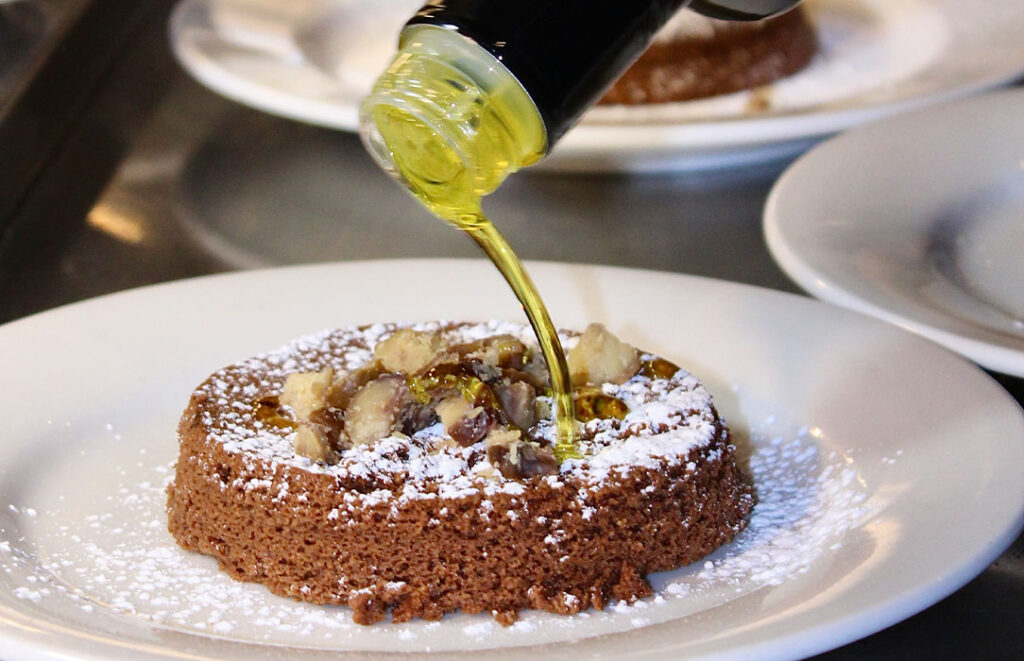
Harvest celebration dinner at Enoteca Sociale with chef Kyle Rindinella for our grove supporters and members. Photo: Courtesy of Lisa Michelle
KH: What should you look for on a label?
FB: Ideally a harvest date, because you want to have it in your hands as close as you can to that harvest date. If a producer doesn’t want to put a harvest date on their bottle or the year, it already starts to tell you that maybe it’s not from that year.
KH: If you’re looking at President’s Choice EVOO, is that okay?
FB: If you like the taste.
KH: Let’s say, because I’m not you, it tastes good to me.
FB: Then that’s fine. The beautiful thing about olive oil is that, to this day, I haven’t found anybody allergic to it. It’s never killed anybody. It doesn’t turn into poison. And that’s where the industry gets away with it.
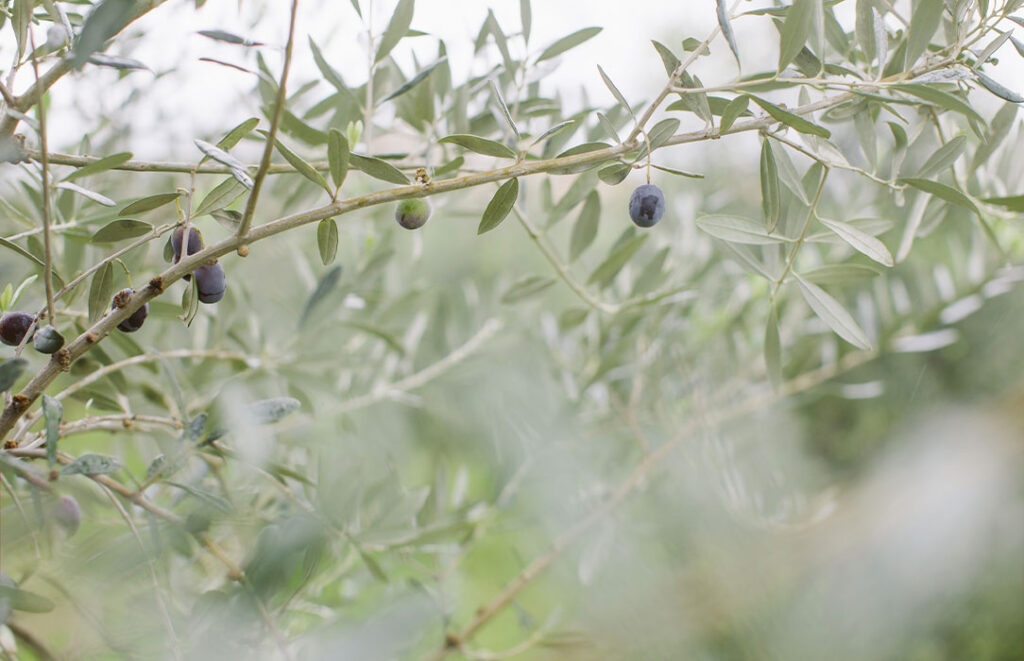
Olives ripe for the picking, Bagno A Ripoli, Florence, Italy. Photo: Courtesy of Abandoned Grove
KH: What else should we avoid?
FB: Anything that says olive oil, light olive oil or extra light olive oil, because that olive oil is refined. If you’re buying virgin or extra virgin, unless there’s any fraud in the bottle, it’s literally natural. Olive oil would’ve gone through a refining process, the same way as any grapeseed oil or canola oil, [which is] industrially extracted through chemicals and heat.
KH: Avoid olive oil.Then what?
FB: If there’s any indication of the varietal of olives on the label, that’s another bonus point for the producer because they’re proud to tell you what’s in the bottle. If you have a DOP (protected designation of origin) certification or an IGP (protected geographical indication) certification, that gives you a certainty of where it comes from.
KH: How long does unopened olive oil last when it’s stored properly?
FB: If you keep it closed and you keep it in the dark and at a cool temperature, if it was born in perfect shape, it will last 18 to 24 months.
KH: What’s the proper temperature?
FH: You can keep it in a cellar. Usually 17, 18 C. Wine cellar temperature’s really good for olive oil.
KH: Do you put this on your ice cream?
FB: All the time. This is Death In Venice gelato.
KH: I don’t even know how to describe this. It’s just a revelation.
FB: The addiction becomes when you taste food with good oil. With One Tree One Bottle, olive oil is the reward, because if we can do things the right way and allow farmers to do what they’re supposed to do, then we would all have good oil.
This interview had been edited and condensed for clarity and length.


